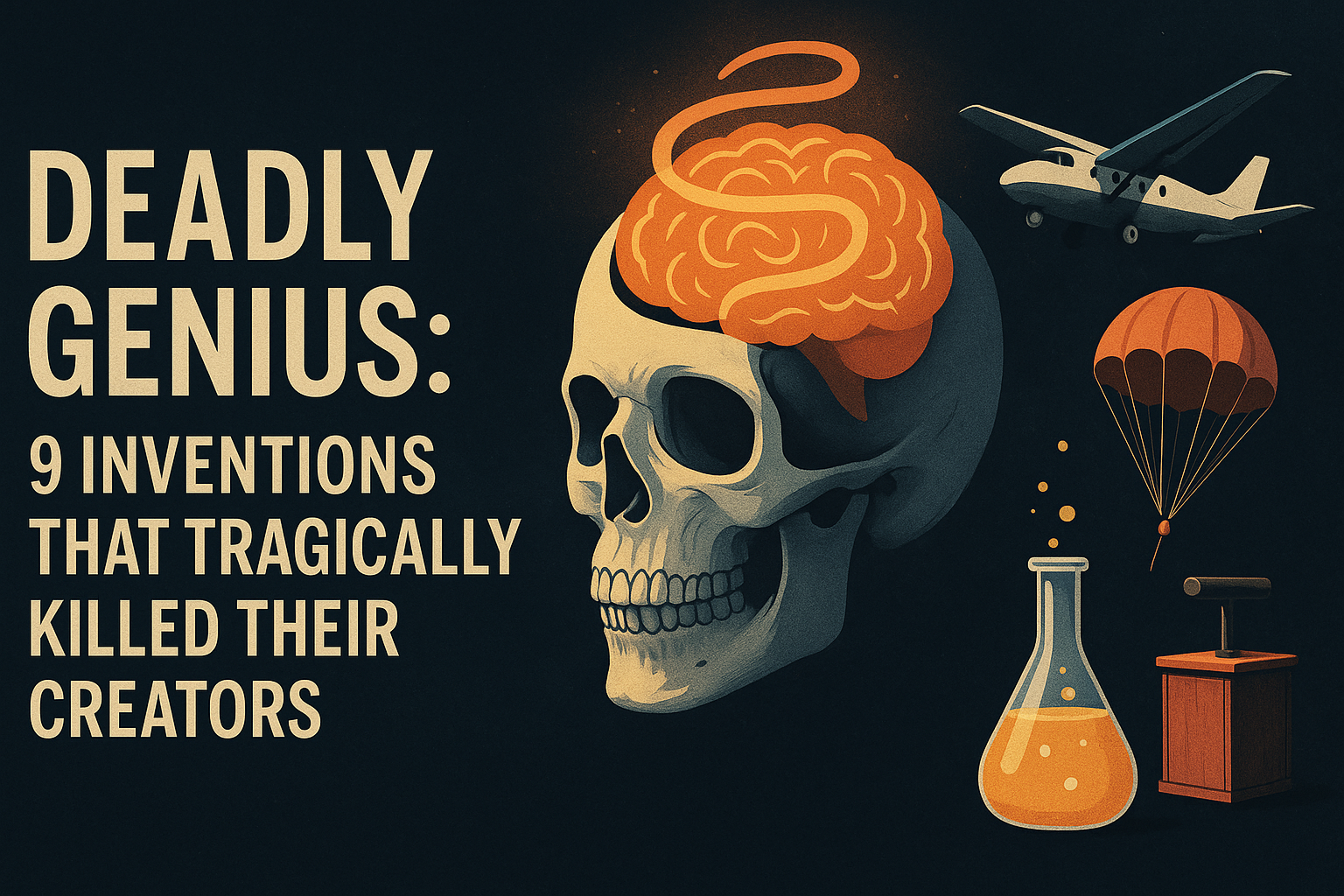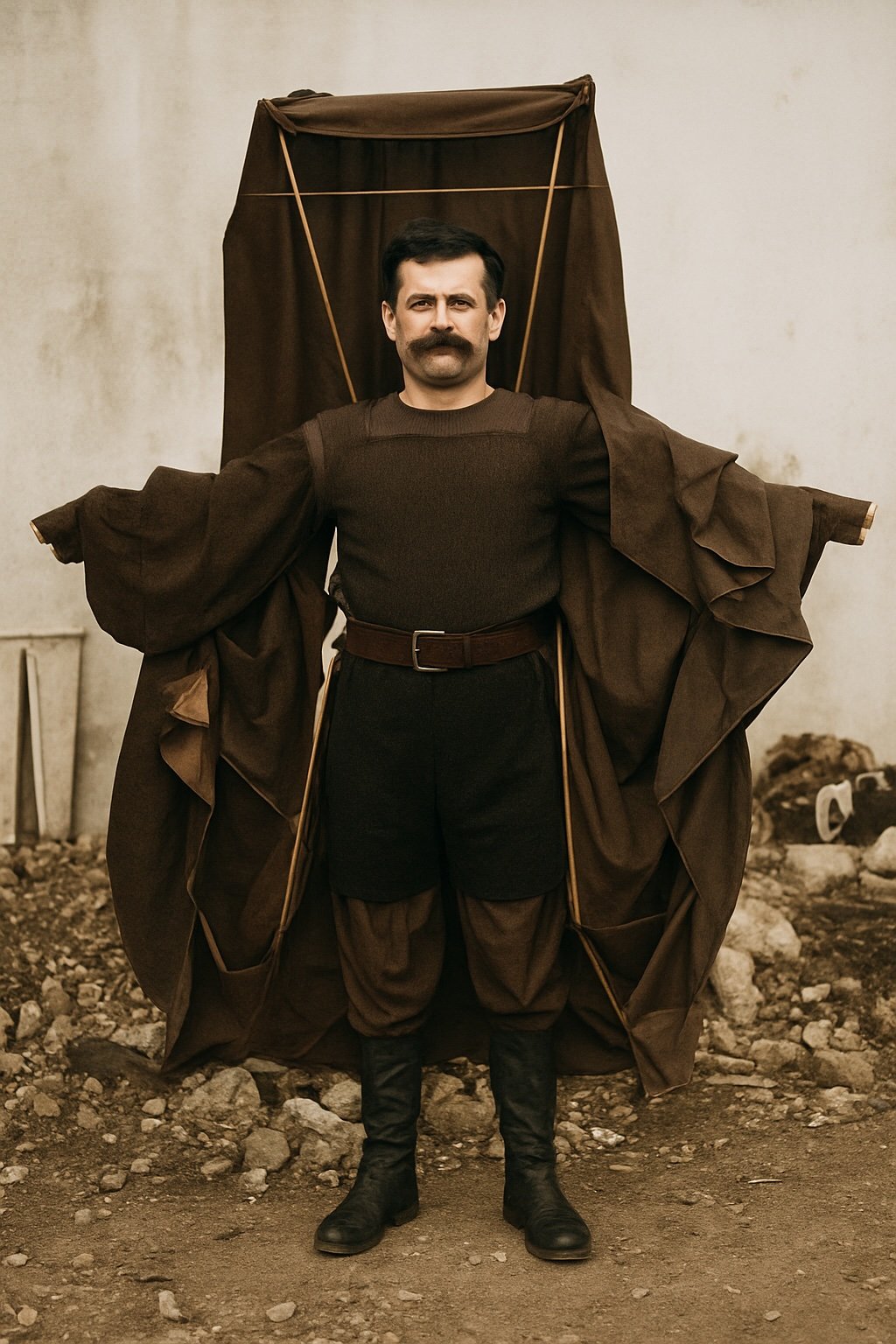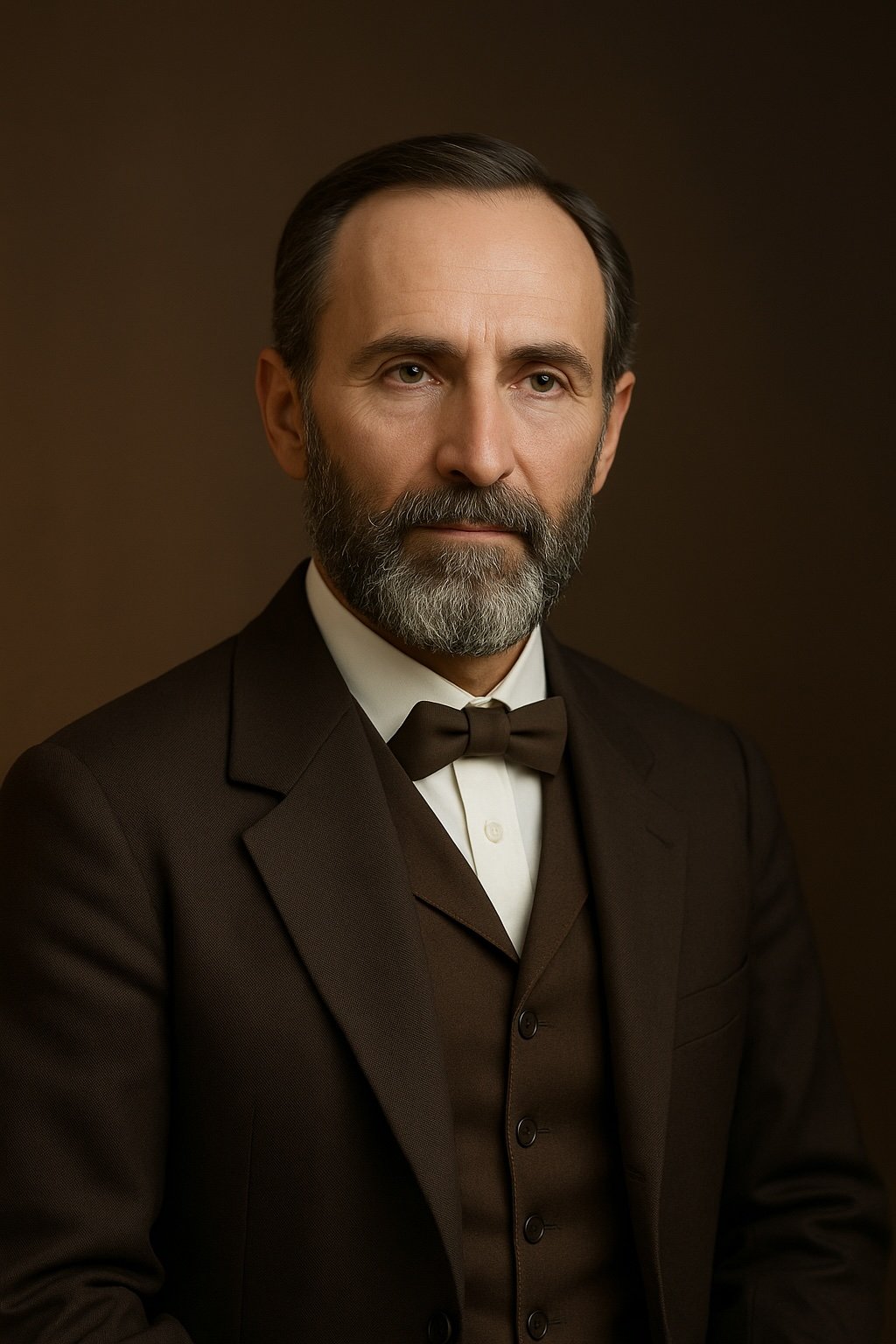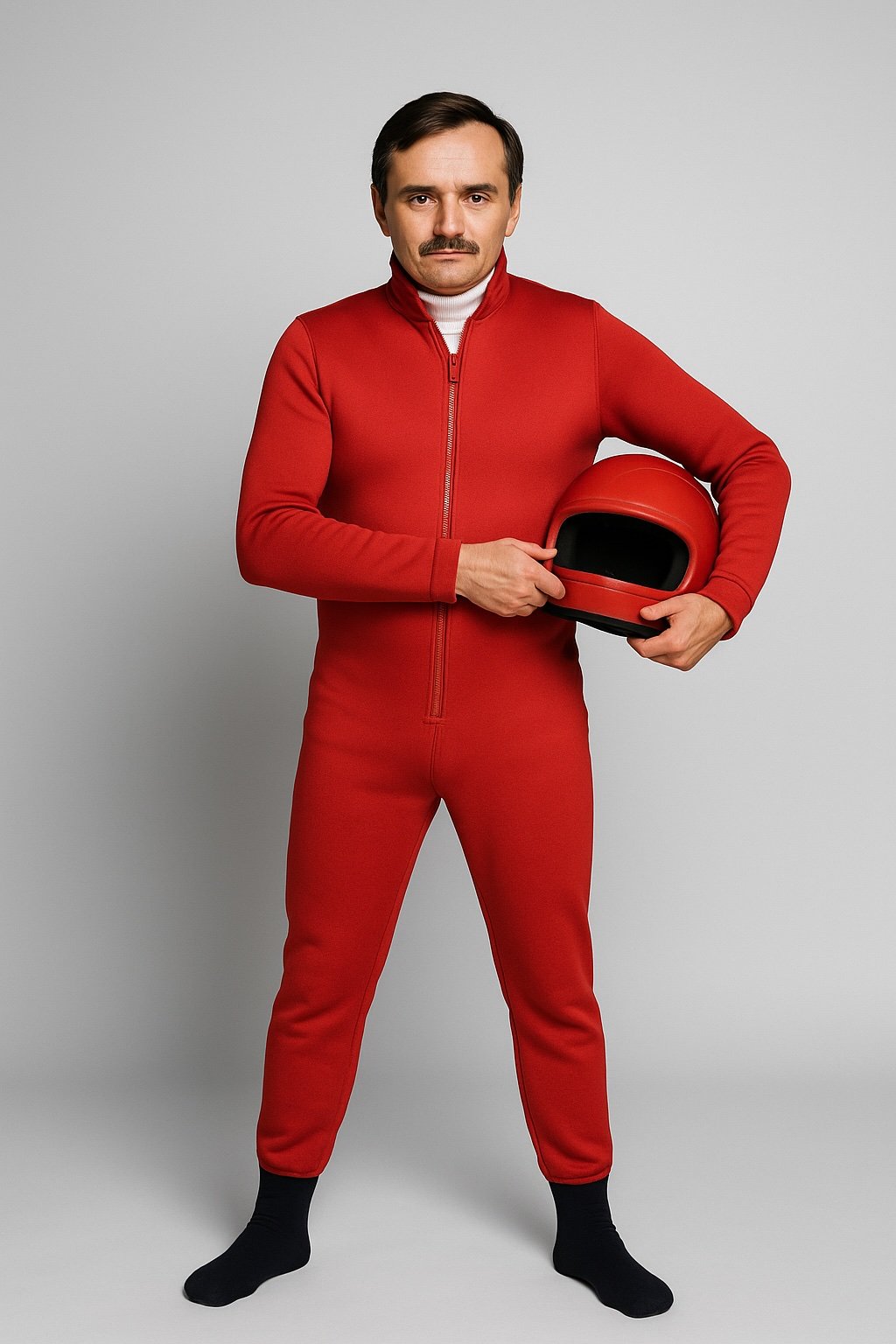Human history is full of brilliant minds who dared to push the boundaries of science and engineering. But sometimes, that daring came at a terrible cost. In rare, tragic, and sometimes ironic cases, inventors fell victim to the very devices they spent years creating.
Here are nine chilling stories of innovators who died at the hands of their own inventions—not just as cautionary tales, but as reminders of the thin line between genius and disaster.
 1. Franz Reichelt – The Flying Tailor Who Leapt to His Death
1. Franz Reichelt – The Flying Tailor Who Leapt to His Death
Invention: Wearable parachute suit
Year: 1912
Location: Eiffel Tower, Paris, France
Franz Reichelt, a tailor of Austrian descent living in France, was obsessed with developing a wearable parachute for aviators. At the dawn of powered flight, pilots had limited options for surviving crashes. Reichelt believed his coat-like parachute could save lives—and he insisted it worked.
Despite being advised to test the parachute using a dummy, Reichelt boldly jumped off the Eiffel Tower himself to prove its functionality. Tragically, his parachute failed to deploy properly, and he plummeted to his death in front of a crowd and cameras.
What went wrong?
Reichelt’s design was fundamentally flawed. It was too heavy and stiff to allow proper airflow and drag. It neither spread nor caught air—key principles for any parachute. Experts had warned him, but his confidence overrode caution.
Legacy:
The horrifying footage of Reichelt’s death exists to this day. His story remains a powerful example of how ambition, when unchecked by rigorous testing, can be fatal.
 2. Horace Lawson Hunley – The Submarine That Became a Tomb
2. Horace Lawson Hunley – The Submarine That Became a Tomb
Invention: The H.L. Hunley, a Confederate hand-cranked submarine
Year: 1863
Location: Charleston, South Carolina, USA
Hunley was a maritime engineer and Confederate supporter during the American Civil War. He envisioned a submersible that could bypass Union blockades. His creation, the H.L. Hunley, was an 8-man submarine powered by a hand crank and armed with a spar torpedo.
In its final test before deployment, Hunley himself boarded the sub. Unfortunately, the vessel sank during a dive, killing him and the crew.
What went wrong?
The Hunley suffered from poor ballast control and a fragile hull. In earlier tests, the sub had already killed a crew, but Hunley pressed forward. The conditions of underwater navigation weren’t well understood at the time. Cramped, air-tight, and barely maneuverable, the sub was inherently dangerous.
Legacy:
Although Hunley died, the submarine did go on to make history—it became the first to successfully sink an enemy warship (USS Housatonic) in combat. But it never returned. It sank again, taking its new crew with it.
The wreck was recovered in 2000, and Hunley’s remains were buried with full military honors.
 3. Marie and Pierre Curie – The Price of Radioactivity
3. Marie and Pierre Curie – The Price of Radioactivity
Invention: Discovery and isolation of radioactive elements (polonium and radium)
Years: 1898 onward
Location: France
Though not inventors in the traditional sense, Marie and Pierre Curie are known for pioneering research in radioactivity—a word they themselves coined. Their discovery of radium and polonium revolutionized science, particularly in cancer treatment and nuclear physics.
But radiation, which they handled with bare hands and stored in desk drawers, slowly destroyed their bodies.
What went wrong?
At the time, the dangers of radioactivity were unknown. The Curies routinely inhaled radioactive dust and carried radium in their pockets. Pierre died in a street accident in 1906, but Marie lived until 1934—dying of aplastic anemia likely caused by years of radiation exposure.
Legacy:
Marie Curie remains the only person to win Nobel Prizes in two different sciences (Physics and Chemistry). Her notebooks are still radioactive—and will remain so for thousands of years. The ethics of early radioactive research remain controversial, especially as many early lab assistants also suffered from radiation-induced illnesses.
 4. Thomas Midgley Jr. – The Man Who Poisoned the Planet… and Himself
4. Thomas Midgley Jr. – The Man Who Poisoned the Planet… and Himself
Inventions: Tetraethyl lead (TEL) and chlorofluorocarbons (CFCs)
Years: 1920s–1940s
Location: USA
Midgley was a chemical engineer whose inventions reshaped the modern world—and not for the better. He developed:
Tetraethyl lead, an anti-knock agent added to gasoline (now banned globally for its toxicity)
CFCs, used as refrigerants and propellants, later found to destroy the ozone layer
Both had catastrophic environmental consequences.
Later in life, Midgley contracted polio and became paralyzed. Ever the inventor, he created a system of pulleys and ropes to help lift himself from bed. Tragically, he became entangled in the device and died of strangulation.
What went wrong?
His inventions were created in an era with little environmental oversight. The full toxicity of leaded fuel and CFCs wasn’t understood—or ignored due to industry interests. His death was a grim metaphor for the unintended consequences of his own inventions.
Legacy:
Midgley’s work has been called “one of the greatest environmental disasters in history.” His story is now taught in ethics courses in engineering and chemistry.
 5. Valerian Abakovsky – The Death Train
5. Valerian Abakovsky – The Death Train
Invention: The Aerowagon – a high-speed railcar powered by a propeller
Year: 1921
Location: Soviet Russia
Abakovsky was a young Soviet engineer who developed the Aerowagon—a railcar fitted with an aircraft engine and rear propeller. It was designed to transport Soviet officials at high speeds across the country.
In a test run, the Aerowagon reached speeds over 140 km/h but derailed on its return journey, killing Abakovsky and five others.
🔬 Subscribe to SciMail
Get the latest science discoveries straight to your inbox!
What went wrong?
Railroads are not designed for high-speed travel with top-heavy vehicles propelled by propellers. The car’s design lacked aerodynamic and structural stability, and it was pushed beyond safe speed limits.
Legacy:
Though the idea of high-speed rail lived on in other forms (like Japan’s bullet trains), the Aerowagon was abandoned. Abakovsky was posthumously honored as a hero of Soviet innovation.
 6. William Bullock – Crushed by His Own Printing Press
6. William Bullock – Crushed by His Own Printing Press
Invention: The rotary web-fed printing press
Year: 1867
Location: USA
Bullock revolutionized printing by inventing a press that could feed in continuous rolls of paper, dramatically speeding up newspaper production. While installing one of his presses, his foot got caught in the machinery. The injury led to gangrene, and he died during surgery.
What went wrong?
Early industrial machinery often lacked proper safety mechanisms. Operators and inventors alike were exposed to high risks, especially when repairing or adjusting moving parts.
Legacy:
Despite his tragic death, Bullock’s invention laid the foundation for modern printing. His press became widely adopted across America and Europe.
 7. Henry Smolinski – The Man Who Tried to Build a Flying Car
7. Henry Smolinski – The Man Who Tried to Build a Flying Car
Invention: The AVE Mizar – a Ford Pinto combined with airplane wings
Year: 1973
Location: California, USA
Henry Smolinski dreamed of building a practical flying car. In the 1970s, he co-founded Advanced Vehicle Engineers and created the AVE Mizar—a bizarre-looking hybrid of a Ford Pinto and the rear wings of a Cessna Skymaster.
The concept was ambitious: drivers could detach the wings and drive the vehicle on regular roads, then reattach them and take to the skies. Smolinski and his business partner Harold Blake took it for a test flight in 1973. Mid-air, one of the wing struts failed due to poor welding. The vehicle crashed, killing both men.
What went wrong?
The aircraft was hastily engineered, with several components not designed to withstand aerodynamic stress. According to the National Transportation Safety Board (NTSB), the use of automotive parts for flight control was ill-advised and improperly tested.
Legacy:
Smolinski’s dream died with him, but his work inspired future developers of flying car prototypes. Today, companies like PAL-V and Klein Vision are revisiting the idea—this time with better tech and rigorous testing.
 8. Karel Soucek – The Barrel Drop That Turned Deadly
8. Karel Soucek – The Barrel Drop That Turned Deadly
Invention: Shock-absorbing barrel for stunts
Year: 1985
Location: Houston Astrodome, USA
Canadian stuntman Karel Soucek was famous for going over Niagara Falls in a barrel and surviving. Encouraged by this success, he designed a more advanced barrel with internal shock absorbers and foam lining.
To promote it, he planned a stunt inside the Houston Astrodome, where he would drop from a height of 180 feet into a water tank. But the barrel struck the edge of the tank and bounced violently. Soucek was critically injured and died hours later.
What went wrong?
Despite meticulous planning, the drop was miscalculated. The water tank was too small, and the barrel was released off-target. Observers said the stunt lacked redundancy and safety nets.
Legacy:
Soucek is remembered for his daring and innovation in stunt design. His story remains a cautionary tale about pushing human limits without layered safety mechanisms.
 9. Alexander Bogdanov – Killed by His Quest for Immortality
9. Alexander Bogdanov – Killed by His Quest for Immortality
Invention: Human blood transfusion experiments for rejuvenation
Year: 1928
Location: Soviet Russia
Physician, philosopher, and early Bolshevik Alexander Bogdanov was a pioneer in the field of blood transfusion. Obsessed with the idea of physical rejuvenation, he conducted experiments where he exchanged blood with younger volunteers.
Initially, Bogdanov claimed improvements in his eyesight and vigor. However, in a 1928 session, he transfused blood from a student who unknowingly had both tuberculosis and malaria. Bogdanov died shortly after.
What went wrong?
At the time, little was understood about blood-borne diseases, immune system compatibility, or transfusion hygiene. Bogdanov, a trained physician, had bypassed medical safeguards in pursuit of longevity.
Legacy:
Bogdanov’s work was both flawed and visionary. His experiments foreshadowed later advances in plasma therapy and transfusion medicine. His tragic death highlights the dangers of self-experimentation.
Final Analysis: When Innovation Turns Lethal
These tragic stories, though separated by centuries and technologies, share striking themes and patterns:
1. The Culture of Self-Experimentation
From Bogdanov injecting himself with blood to Reichelt jumping off the Eiffel Tower, many inventors placed themselves on the line—often to prove a point or secure funding. While self-experimentation can drive innovation, history shows that it often ends in disaster without peer review or safety protocols.
2. The Absence of Testing Rigor
Whether it was Smolinski’s flying car or the Aerowagon, many of these fatal inventions lacked comprehensive testing under real-world conditions. In modern engineering, failure analysis, redundant systems, and safety margins are essential. These cases show what happens when those are missing.
3. Ethical Blind Spots
Inventors like Thomas Midgley Jr. and the Curies didn’t set out to harm others—but their inventions had devastating long-term effects on public health and the environment. The Curies paid with their lives. Midgley’s work poisoned generations and permanently damaged the atmosphere.
Today, inventors must be held to higher ethical standards, especially when the impact of their work extends beyond themselves.
4. The Burden of Legacy
Some of the most tragic parts of these stories lie in how society remembers them. While Bullock, Hunley, and the Curies are celebrated for their contributions, their deaths are often footnotes. Others, like Midgley, are remembered more for what went wrong.
In each case, their legacies are complex—combinations of brilliance, bravery, and sometimes fatal oversight.












Leave a Reply